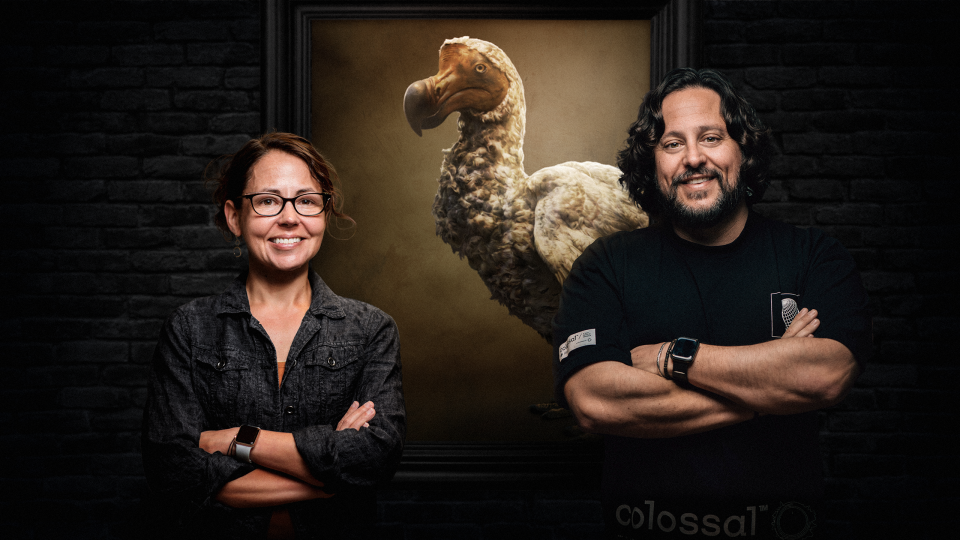Can a Texas company bring back the long-extinct dodo bird?
- Oops!Something went wrong.Please try again later.
Going the "way of the dodo bird" could take on new meaning in just a few years, as a Texas company says it aims to bring back the long-extinct creature.
Colossal Biosciences, which previously made headlines for its plans to to bring back the wooly mammoth and the Tasmanian tiger, says it is now turning its attention to the dodo.
The bird, which is closely related to pigeons, went extinct in 1662 after being wiped out from its native ecosystem, Mauritius, because of human settlement and ecosystem competition. The dod is widely considered one of the best examples of human-induced extinction. The dodo will mark the third animal the company is working on. Colossal is most famous for its lofty goal of creating a wooly mammoth-elephant hybrid, but the company also announced plans last year to try and back another extinct animal, the Tasmanian tiger.

Colossal Biosciences, which this week announced a new $150 million funding round, is led by Austin-based entrepreneur Ben Lamm and geneticist George Church of Harvard Medical School, was formed in 2021 with the goal of advancing the field of de-extinction and combating climate change. The company has offices in Austin, Dallas and Boston and also works with a team at the University of Melbourne.
Colossal plans to use breakthrough gene-editing technologies to restore extinct animals, and has been working to develop a range of innovative technologies.
How might they create a dodo hybrid?
Colossal is establishing an Avian Genomics Group that will be focused on the dodo. Beth Shapiro, a paleogeneticist, will be leading the effort to bring back the bird. Shapiro, an evolutionary molecular biologist, has also been working on researching the dodo and reconstructing its DNA prior to joining Colossal.
Like with the other animals, the Colossal team will not be creating an exact clone of the dodo bird, but a hybrid that selects the specific traits most commonly associated with the animal and its ability to live in its respective natural environment. The plan is to eventually reintroduce the animals into their environments, which will help restore ecosystem rebalance.
"Being able to recreate something that is functionally similar to an extinct species that's as prevalent in people's minds as the dodo is hopefully going to create a little bit of enthusiasm for thinking about consequences of human cost extinctions," Shapiro said. "Today, we have technologies, including biotechnology.... We can develop tools that we can use to protect living species going away from becoming this next species."

Unlike the other animals Colossal is working on, birds can't be "cloned," Lamm said. That means the company will need to take different approaches to work its way toward a functional dodo.
Shapiro said there are a number of tools being developed to work with bird gene editing, and the one Colossal sees as most promising will be working with primordial germ cells, or cells that eventually become sperm or eggs. The technique has prevously been used with chicken eggs. Once an egg is laid, scientists can use tools to remove cells that can then be grown in a lab.
"We can edit those cells, then we can reinject them back into an egg. And those (cells) will migrate on the outside of the embryo and establish themselves with the sperm or eggs of the next generation," Shapiro said. "Then you'll have a bird that was totally normal and unedited, but their germ cells are edited and those germ cells are what we will then use to do that next generation to help move its evolution down a path."
The company will be pairing dodo DNA with the genome of the Nicobar pigeon, the extinct bird's closest living relative. Shapiro said because pigeons are a diverse group of birds and it's unclear how many millions of years they diverged, its not clear how many edits will be needed to bring back a dodo-like creature.
Lamm said the company's latest focus comes as bird populations have declined in recent years.
"Birds are going extinct at an alarming rate. It's a huge problem and there's not enough money that's really going into avian conservation. And then there's also a big need for us to develop new tools in advance some of the existing tools at a genomic scale," Lamm said.
Shapiro said the methods and discoveries made during the dodo process could have implications for some living bird species in danger of extinction.
"As a scientist, what I would like to see are technologies that are developing and help living species survive," Shapiro said. "The world today that outpaces the capacity of species to adapt to keep up evolution by natural selection. These technologies don't exist for birds, but we can have an enormous hand in developing them. There's little doubt in my mind that what is discovered along this path will have access to protect living species."
Where do tigers live? Tigers have a diverse range of habitats. Here's what to know.
What about the mammoth and the Tasmanian tiger?
Colossal says it has been making progress on its previousy annouced projects to bring back versions of the mammoth and the Tasmanian tiger, two other extinct species. It has said it could could bring versions of both within the next decade.
"For the mammoth, it's been 'all systems go,' which is great, and we are doing similar things with the thylacine," Lamm said, using the formal scientific name for the Tasmanian tiger.
Colossal's mammoth is expected to be a hybrid of an Asian elephant and a mammoth. The company has been building on work done by Church, who used a technology known as CRISPR to copy mammoth genes into the genome of an Asian elephant in 2015. CRISPR, an acronym for "clustered regularly interspaced short palindromic repeats," is a biotechnology that has the potential to edit DNA and could be used in a variety of ways.
The company plans to use similar techniques on the Tasmanian tiger, building off work from Andrew Pask, a marsupial evolutionary biologist and Tasmanian tiger expert who is partnered with the company. The marsupial, which went extinct in 1936, was native to Australia, Tasmania and New Guinea. If successful, Colossal's thylacine will build on DNA from one "miracle specimen" of a joey that was taken from its mother's pouch and placed into alcohol in a museum in Melbourne that had largely intact DNA. It will also involve other thylacine specimens that are less preserved, as well as other members of the Dasyuromorphia order of marsupials, which includes the Tasmanian devil.
This article originally appeared on Austin American-Statesman: Can this Texas company bring back the long-extinct dodo bird?

